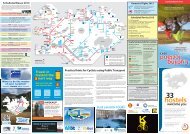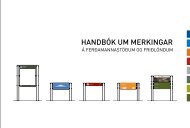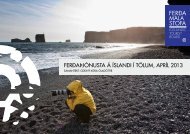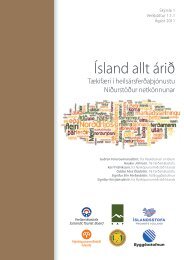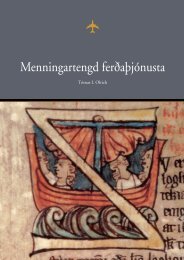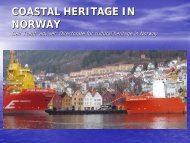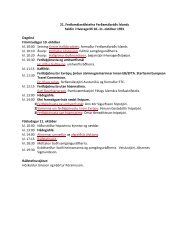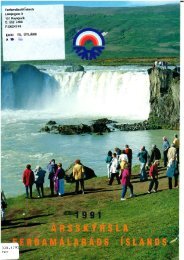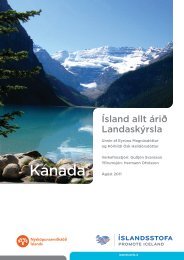Untitled
Untitled
Untitled
Create successful ePaper yourself
Turn your PDF publications into a flip-book with our unique Google optimized e-Paper software.
The mysterious character of the commodity-form consist therefore simply in the<br />
fact that the commodity reflects the social characteristics of men’s own labour<br />
as the objective characteristics of the products of labour themselves, as the<br />
socio-natural properties of these things (Balibar 2007, p. 57)<br />
This general characteristic of the commodity also applies for<br />
production and consumption in the realm of tourism. Indeed, one could<br />
describe the whole business of tourism as a process of commodification by<br />
which use values are converted into touristic exchange values. The original<br />
use value of an old church is religious, but it may be transformed into a<br />
tourist commodity with an added exchange value as a tourist attraction. A<br />
location is just where people live their lives, but it may become a tourist<br />
destination if it manages to appear with touristic exchange value on the<br />
tourism market. Without tourism commodification, places and whatever<br />
their amenity values cannot be sold on the tourist market. The river close<br />
to Varmahlíð is just a river, but it may be used for river rafting. The<br />
ontological trick that has to be performed by those in the tourism industry<br />
is then to transform things and services into commodities, often called<br />
tourism products, which one can put a price tag on. Negri, linking tourism<br />
to image frustratingly and critically remarks that “[c]orruption of the<br />
image has now found an extension in the universal prostitution represented<br />
by tourism” (Negri 2008, p. 63).<br />
Of crucial importance is that tourism commodities are very much<br />
consumed as experiences, i.e. their exchange value lies in the experience<br />
delivered. At the same time, it is not altogether easy to commodify<br />
experiences, for example of a landscape or a tourist attraction. These are<br />
spatially fixed assets that cannot as such be sold and bought. A major part<br />
of tourism commodification thus consists of developing products that are<br />
either supplements to the real and instant tourism experience, like a<br />
souvenir, or lead people towards a scripted experience with trails and<br />
interpretations set in place. This illustrates a fundamental “parasitic”.<br />
feature of tourism, i.e. that it eats at the table of others. To a relatively<br />
large extent tourism is dependent upon on other resources, such as roads,<br />
whales, houses, natural environments etc. For tourism to occur, these need<br />
to be appropriated and commodified for specific touristic purposes.<br />
The commodification of tourism has not only been understood in<br />
terms of use value and exchange value, but also as symbolic value. This<br />
refers to tourists assigning something with symbolic value, for example as<br />
“typical”, “beautiful”, “authentic”, or being able to tell friends back home<br />
about their travel adventures. The creation and usage of symbolic value in<br />
26



